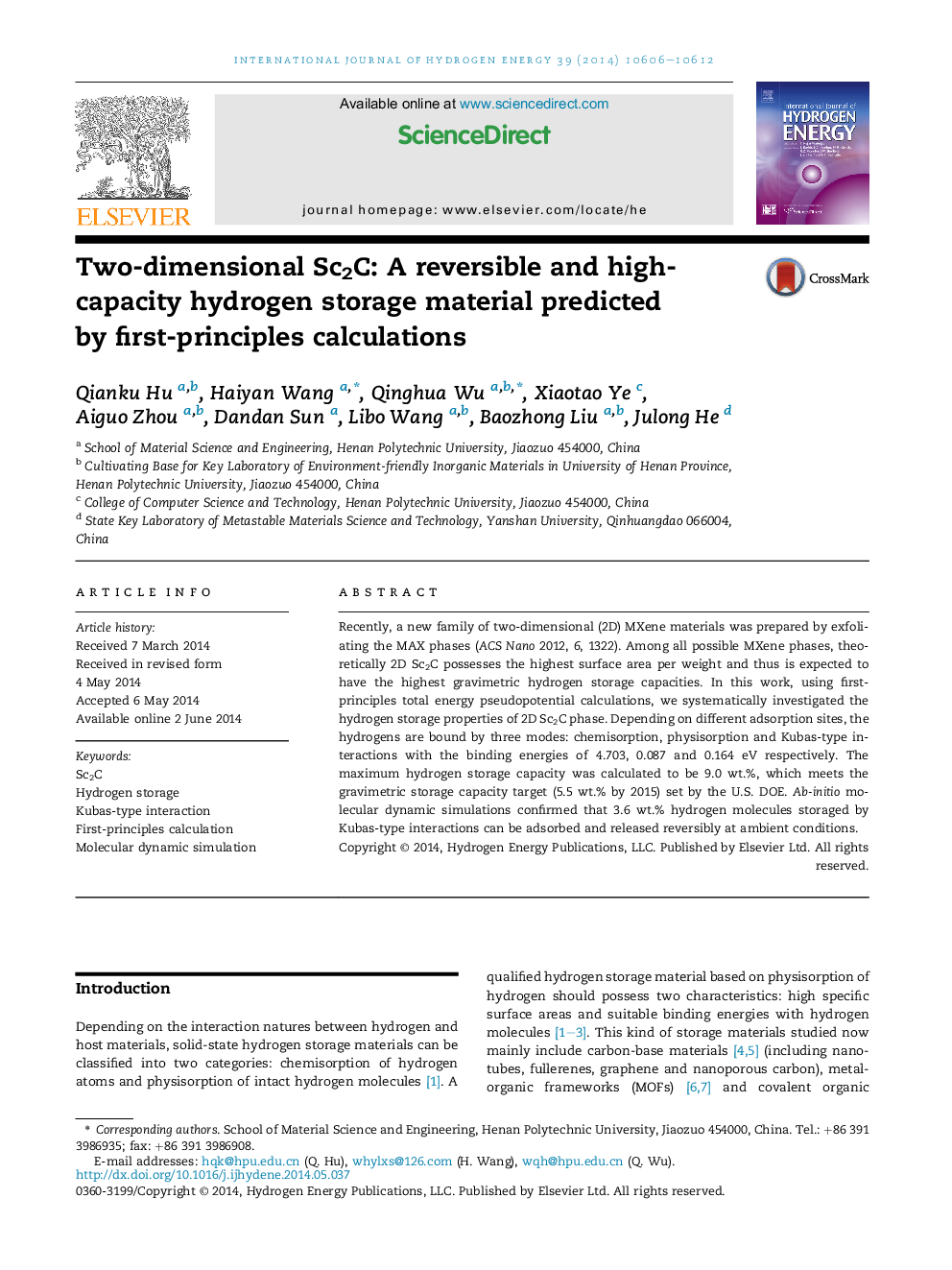| Article ID | Journal | Published Year | Pages | File Type |
|---|---|---|---|---|
| 1276187 | International Journal of Hydrogen Energy | 2014 | 7 Pages |
•We first predicted the hydrogen storage properties of 2D Sc2C phase.•The maximum hydrogen storage capacity was calculated to be 9.0 wt.%.•Adsorption energies of H2 molecule are suitable for applications.•3.6 wt.% H2 molecules are adsorbed and released reversibly at ambient conditions.
Recently, a new family of two-dimensional (2D) MXene materials was prepared by exfoliating the MAX phases (ACS Nano 2012, 6, 1322). Among all possible MXene phases, theoretically 2D Sc2C possesses the highest surface area per weight and thus is expected to have the highest gravimetric hydrogen storage capacities. In this work, using first-principles total energy pseudopotential calculations, we systematically investigated the hydrogen storage properties of 2D Sc2C phase. Depending on different adsorption sites, the hydrogens are bound by three modes: chemisorption, physisorption and Kubas-type interactions with the binding energies of 4.703, 0.087 and 0.164 eV respectively. The maximum hydrogen storage capacity was calculated to be 9.0 wt.%, which meets the gravimetric storage capacity target (5.5 wt.% by 2015) set by the U.S. DOE. Ab-initio molecular dynamic simulations confirmed that 3.6 wt.% hydrogen molecules storaged by Kubas-type interactions can be adsorbed and released reversibly at ambient conditions.
